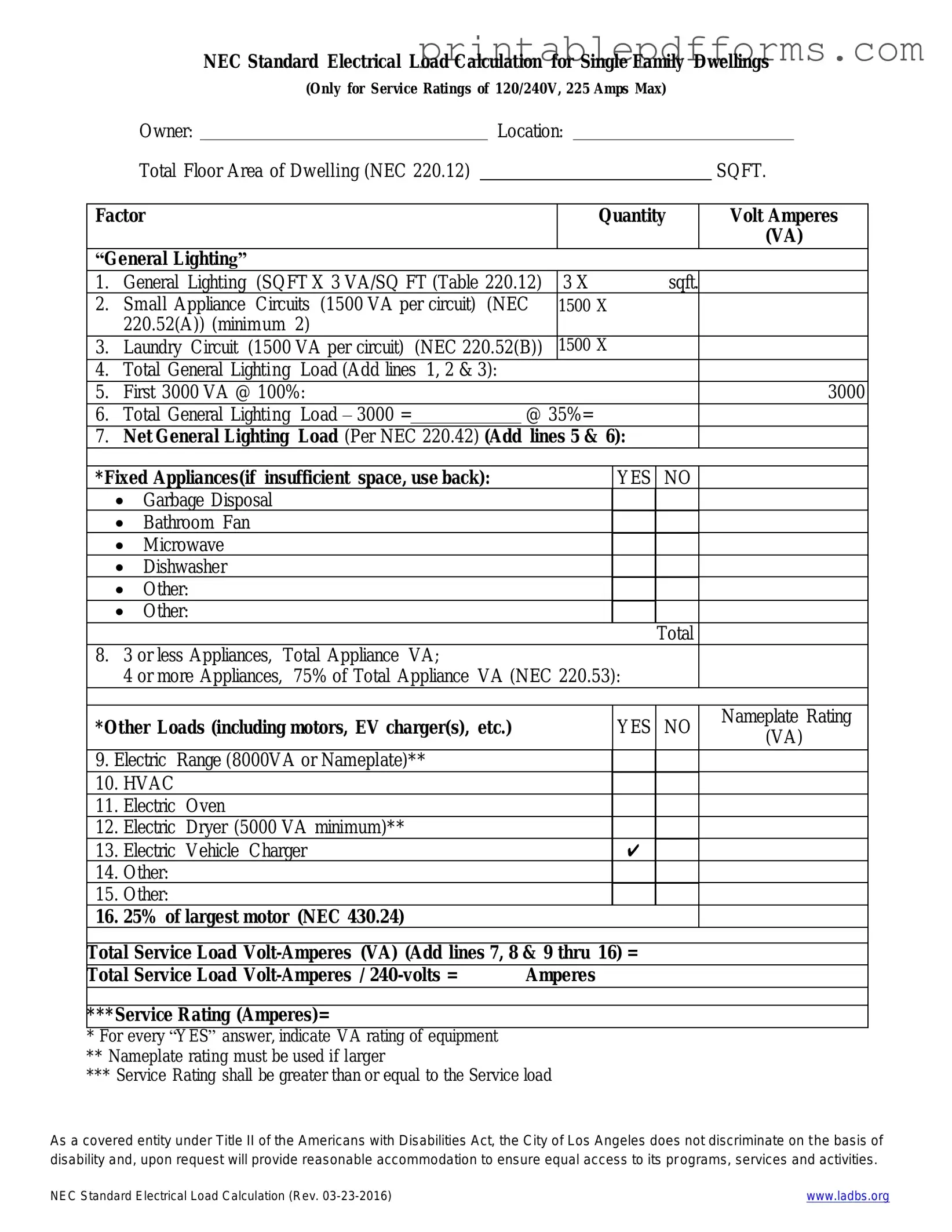Fill a Valid LADBS NEC Standard Electrical Load Calculation Form
The LADBS NEC Standard Electrical Load Calculation form is a crucial document used to determine the electrical load requirements for new construction and remodeling projects in Los Angeles. This form ensures compliance with the National Electrical Code and helps maintain safety standards in electrical installations. For accurate assessments and to facilitate the permitting process, it is essential to fill out this form correctly.
To begin, please click the button below to access the form.
Create This Document Online

